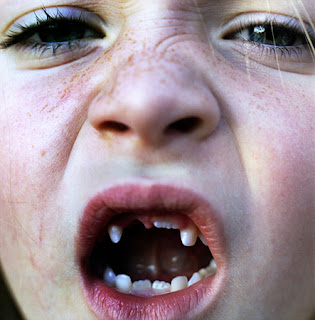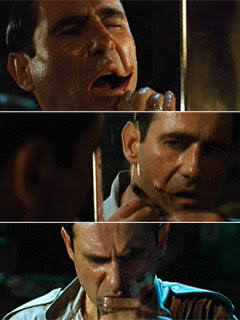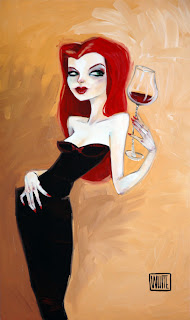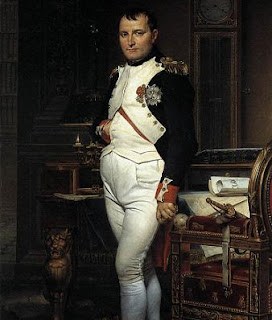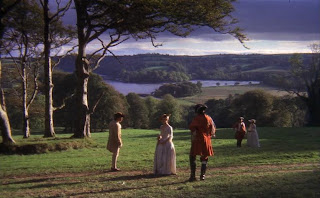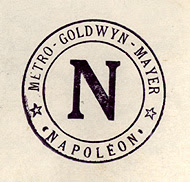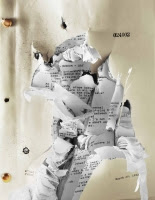Hey guys,
I seriously debated whether I should post this or not. Here I am, the new Reviewer of the Month on TriggerStreet, and suddenly I'm posting a free-will review challenging ScriptShark's coverage of Stray, a Screenplay of the Month nominee.
So why share this review with my friends in the Scribosphere who probably haven't even read her story? Because, as writers, we are so accustomed to receiving criticism, that many times we just accept it, and it's unusual to read a writer defending the work of another writer. It's also a good reminder that not all pro coverage "gets" what you're doing. (A good sign is when they can't even get the names of your characters right.) Additionally, there's nothing wrong with a healthy, constructive, spirited debate about your story, and there's absolutely nothing wrong with you defending your work so long as those creative decisions can be clearly articulated.
And finally, I share this review because the world should know that Nena Eskridge, the girl who gave us the Chinatown Subtext, wrote a GREAT script called Stray, and she deserves to be read.
Hope you enjoy the review. It's definitely... spirited.
Hehehe...
-MM
ScriptShark's Coverage was Completely Misguided
Hey ScriptShark, you guys aren't afraid of a little debate, are you?
Every month, I go through the same thing. "Hey, MM, what's your take on ScriptShark's coverage of my script? I'm a little confused." Join the club. For the most part, I do agree with you guys and I respect your opinions very much and I genuinely appreciate your contribution to TriggerStreet. Not only that, friends and I have found humor with your occassional dip into the land of absurdity. To this day, Rose and I still get a chuckle over some comments you guys made in your coverage of her "Regular Army" script. I especially loved this one: "The reason BROKEBACK MOUNTAIN worked was because it was based on a popular short story and was clearly set as a romantic epic not too much unlike GONE WITH THE WIND." Hehehe... What? What makes you people think that BROKEBACK MOUNTAIN is even remotely similar to GONE WITH THE WIND? Did I somehow miss the scene where Ennis Del Mar dressed up as Scarlett O'Hara? Or did I miss Rhett Butler's gay subtext?
But this time, I must say that your coverage of "Stray" is not humorous. It is, in fact, disheartening and upsetting because it is so completely misguided. What's worse, Nena Eskridge was on the receiving end of this poor treatment, and she is a wildly talented writer with a GREAT script. She put a lot of time and a lot of thought and a lot of work into her script, and she deserved better than this.
How about we start with this quote: "While the first act is something of a mixed bag, the parts dealing with the Jennifer/Greg/Susan triangle definitely capture the audience’s interest. Still Jennifer seems to switch back and forth from calculating acts like stealing Susan’s panties for a scheme, to overt attempts to kill her by knocking a shelf over on her."
May I ask a question?
Who's "Susan?" You mentioned her twice.
There is no "Susan" in the script.
May I ask another question? How much thought did you REALLY put into this coverage? The fact that you gave her "Needs Work" ratings right down the line in almost all the categories leads me to believe not much thought at all. The first line of the comments says "STRAY is a subtly creepy thriller about a mentally unbalanced woman who becomes obsessed with a man to the point that she ruins his relationship with his girlfriend and tricks him into falling for her." That's not it at all. That statement tells me that you did not grasp even the basic premise of her story. This was not about cheap, perverted thrills watching some psycho ruin a guy's life. Yes, at times, this story can be oddly entertaining in a black comedy sort of way, but there was, in fact, a POINT to her story. Nena tells you exactly what her story's about: "A tortured child grows up knowing little about the simple pleasures of family, yet wants for nothing more. Her desperate need calls for desperate actions." This is a character study. This is about a runaway victim's battle to get normalcy into her life, something she has never experienced. And while she's fighting for normalcy, she is also locked in her own cycle and pattern of violence, not unlike Aileen Carol Wuornos whose father was ALSO coincidentally a psychopathic child molester. But Jennifer WANTS to break free from her past and her way of life. What did she tell Marvin? "I want to live like a normal person for a change. See how it feels. Thought maybe I could do that with you." THAT is what her story is about. And this inner conflict she's going through actually makes her a character with depth and sympathy and you guys should have given her "excellent" or "solid" ratings in all categories of "character."
Nena also makes it very clear that Jennifer is a victim of an abusive past. And for you guys to write her off as "a mental case" is not only unprofessional and insensitive to the hard work Nena put into her character but also offensive to victims of abuse. I can expect language like that from young, inexperienced TriggerStreet reviewers but not ScriptShark. I really expected you guys to uphold a higher standard of professionalism. And frankly, to dismiss the main protagonist as "a mental case" says more about how much you failed to understand Jennifer as a character than anything else. And it's also reflected in your across-the-board "Needs Work" ratings.
You said in the coverage that this story should instead "Examine how this sort of trauma either destroys a person, or how they eventually overcome it." You guys ought to judge a story on what it is and what it is trying to be and not dismiss it over all the things it is NOT. Yes, there are many ways of handling this kind of story. Just because you thought of other ways to approach this story doesn't necessarily mean that Nena's approach was WRONG. You guys have to ask yourself, "What is the author trying to accomplish in this story?" And I don't believe that thought ever once crossed your minds. Because Nena is, in fact, making a very clear statement about victims and about them being locked in cycles and patterns of behavior. You guys felt that the ending was "weightless," and yes, it's unconventional, but it's a good ending because she is MAKING A POINT, which you guys should've recognized. You should have seen what point she was trying to make and asked yourselves "Was this the best way to make this point?" So what happens in the end? Jennifer finds herself right back where she started. Her violent past finally caught up with her. And THAT is the point. Nena is, in fact, making a connection between the opening and closing scenes for the sole purpose of making a STATEMENT about Jennifer's cycle of violence. And I don't believe anyone on this site told her to do that, either. That's pretty crafty screenwriting, if you ask me. Connecting the opening and closing shots is a common practice in movies, which you guys should know very well, and you should have seen what Nena was trying to accomplish and started from THAT POINT in your coverage.
Let me ask the question - is there anything wrong with Nena making this kind of statement about victims in her story? Absolutely not. The fact that you guys didn't understand her as a character and the statements that are being made validates the telling of this tale all the more. And this is also why there is no character arc in Jennifer and FOR GOOD REASON. You guys should've seen this and put an "X" under "N/A" for the "Protagonist clearly changes / has an arc" category.
There was nothing wrong with the Marvin scenes.
What was the point of the Marvin scenes? Can anyone tell me? Come on! You guys at ScriptShark are professionals. You should be able to tell me. What's the point? I can tell you what it ISN'T - what you wrote in your coverage: "the screenplay tipping its hand a bit early. Once we’ve seen Jennifer kill Marvin, we’ve seen the worst that she’s capable of. Since so much of her scheme to hook Greg is careful and methodical, the tension is somewhat deflated because we’ve been shown just how psychotic she is. Without the Marvin segments, there would still remain some ambiguity as to if Jennifer is really a psycho or if Sarah is just being paranoid." That's not the point at all. This story is NOT about the slow revelation of whether or not Jennifer is "a psycho." The Marvin scenes were about establishing Jennifer's desire to find normalcy, the impulsive wrong ways she goes about trying to get it, and it also establishes her cycle of violence, which is absolutely essential to this story. She's capable of anything. But she's fighting to be normal. That is her inner struggle. I thought that her setting up shop and living in his house after killing Marvin was a master stroke on Nena's part because you know very well she won't get away with it and that no matter how much she tries to live a normal life, trouble is coming one way or another. She will eventually be found out living in his house. But wait, as another twist, in one of many in the story, she actually does get away with it.
Nena handled the Greg/Jennifer/SARAH love triangle just fine.
You guys wrote, "Still Jennifer seems to switch back and forth from calculating acts like stealing Susan’s panties for a scheme, to overt attempts to kill her by knocking a shelf over on her. The acts like the shelf falling would be more effective if there was doubt in the audience’s mind as to if it was a simple accident or a deliberate act." You guys act as if Jennifer's erratic behavior was without a point. We just established Jennifer's inner struggle, what she wants and her battles with her own cycle of violence, right? What Nena's doing with this set up is to put Jennifer into a position where she's forced to FACE her inner conflict and decide HOW she's going to handle life's daily struggles. The question throughout Act Two is not "who did it," but it's "what will Jennifer do? How far will she go? Will she really change and settle down into a normal life?" THAT was the point, guys. You wrote that "What if Jennifer is sly enough to befriend Sarah and plays on Sarah’s sympathies in order to get invited into their home?" This isn't about showcasing how cunning Jennifer can be and how complex we can twist this triangle scenario into creating more tension. Additionally, this isn't about how evil we can make Jennifer, either. This is about putting Jennifer, the victim of abuse who has a pattern of destructive behavior, into situations where she is forced to FACE her inner conflict and make decisions.
And as I wrote, this is about Jennifer's violent past catching up with her - literally and figuratively.
And you better believe that a character like Jennifer Davis has star appeal, especially young female actresses with squeaky clean Disney-like images who are looking to do something edgy.
I could go on, but I should stop here.
Let me just say that this isn't about who won "Screenplay of the Month." I haven't had the opportunity to read the other scripts, although I would have loved reading them. For all I know, "Queerly Beloved" may very well be the best of the three scripts. But I can say with absolute conviction, you didn't give Nena the fair, thoughtful coverage she deserved.
ScriptShark, I think you owe Nena an apology if for no other reason than the "mental case" comment, but I think she deserves all the available opportunities you have to offer new screenwriters.
-MM
